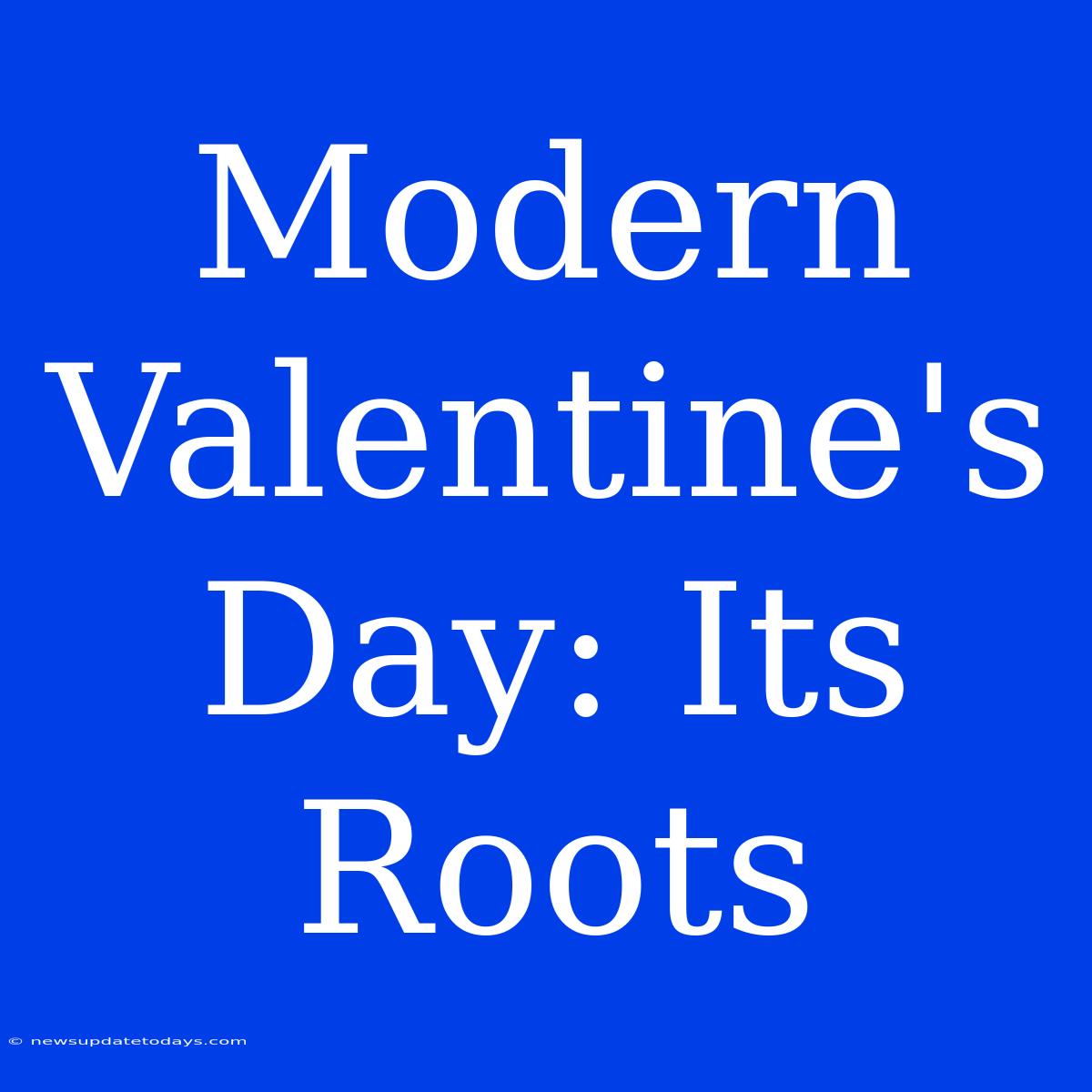Modern Valentine's Day: Unveiling Its Roots
Valentine's Day. The day of hearts, flowers, chocolates, and romantic gestures. But have you ever wondered about the origins of this widely celebrated holiday? Its modern form is a far cry from its historical roots, a fascinating blend of ancient traditions and medieval legends. This article delves into the surprising history behind the modern Valentine's Day celebration.
The Ancient Roman Connection: Lupercalia
While the precise origins remain shrouded in mystery, many historians link Valentine's Day to the ancient Roman festival of Lupercalia. Celebrated in mid-February, Lupercalia was a fertility festival, a boisterous event involving ritualistic cleansing, animal sacrifice, and, interestingly, a matchmaking element. Young men would draw the names of women from a jar, forming temporary pairings for the festival. These pairings sometimes led to marriage, hinting at a precursor to modern Valentine's Day's romantic focus. Lupercalia's pagan roots are a stark contrast to the Christian connotations often associated with Valentine's Day today.
Saint Valentine: The Martyr(s)?
The Christian connection comes from the legend of Saint Valentine (or possibly multiple saints named Valentine). Several martyrs named Valentine existed during the Roman Empire, most notably in the 3rd century. However, details of their lives remain obscure, making it difficult to pinpoint a single historical figure who directly influenced the holiday. The stories surrounding these saints are often romanticized, blending religious martyrdom with romantic themes that likely helped solidify the holiday's association with love and affection.
Geoffrey Chaucer and the Courtly Love Tradition
The evolution of Valentine's Day as a celebration of romantic love is heavily influenced by medieval literature. Geoffrey Chaucer's Parliament of Foules, written in the late 14th century, is frequently cited as the first association between Valentine's Day and romantic love. Although not explicitly about Valentine's Day itself, the poem's focus on courtly love and bird mating rituals helped solidify the connection in the public imagination. This literary association significantly contributed to the shift from a pagan fertility festival to a day emphasizing romantic pairings.
The Rise of Commercial Valentine's Day
From medieval associations to the modern era, Valentine's Day's transformation continues. The 19th century witnessed the rise of mass-produced Valentine's Day cards, transforming the celebration into a commercial enterprise. This surge in commercialization solidified Valentine's Day’s place in popular culture, creating the familiar traditions we associate with the holiday today: exchanging cards, flowers, chocolates, and gifts. The commercialization, while sometimes criticized, has undoubtedly made Valentine's Day a globally recognized celebration.
Modern Interpretations: Beyond Romance
While romantic love remains the dominant theme, modern Valentine's Day embraces broader interpretations. Many celebrate friendships, family bonds, and self-love. This expanded scope reflects a shift in societal values, reflecting a more inclusive and diverse approach to expressing affection. The evolution of Valentine's Day continues, adapting to modern societal nuances and expanding its definition of love.
In conclusion, Valentine's Day's journey from a pagan fertility festival to a globally celebrated holiday of romantic love (and more) is a fascinating exploration of cultural evolution. Understanding its diverse origins provides a richer appreciation for the complexities and contradictions inherent in this widely celebrated holiday.

